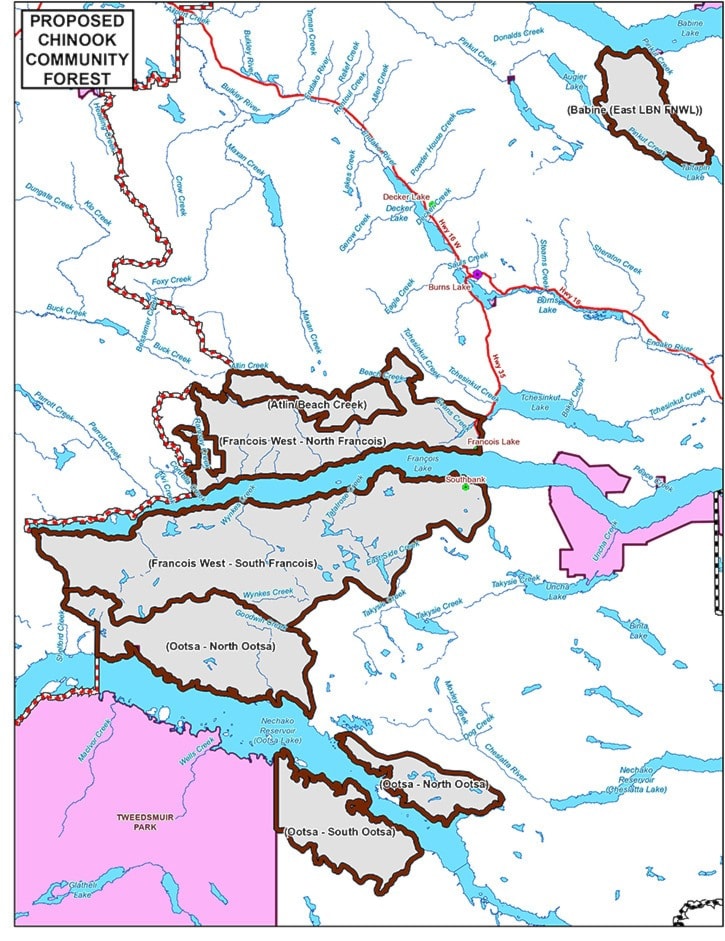In the story ‘Chinook Community Forest still on track’ published in the Lakes District News’ Oct. 7, 2015 edition, the Chinook Community Forest interim board of directors were hoping that harvesting would begin in the 2015/16 winter season.
Although the community forest licence still hasn’t been issued, Burns Lake Mayor Luke Strimbold said he’s still confident that harvesting will begin within the next couple of months.
“We are in the final process of completing the required documents for the limited partnership and simultaneously working out final details of the license document, which will allows us to begin harvesting prior to spring breakup,” said Strimbold.
The Chinook Community Forest board has recognized that the process to get this project up and running has been much slower than anticipated.
Greig Bethel, a spokesperson with the B.C. Ministry of Forests, said it’s not surprising that this process would take so long, considering that there are six different First Nations involved, and in addition to the proposed community forest, areas for First Nations’ woodland licenses also needed to be identified.
The Chinook Community Forest is a partnership of two local governments - Village of Burns Lake and the Regional District of Bulkley-Nechako (RDBN) – and six local First Nations groups - Burns Lake Band, Lake Babine Nation, Cheslatta Carrier Nation, Wet’suwet’en First Nation, Skin Tyee Nation and Nee Tahi Buhn First Nation.
According to Strimbold, the Chinook Community Forest is unique in many ways since it is currently the largest community forest in the province and the only one to have a partnership between six First Nations and two local governments.
Back in March 2015, the village withdrew from RDBN’s Chinook Community Forest economic development function. In a subsequent interview, Strimbold said the decision was prompted by council’s desire to have direct representation on the Chinook Community Forest board and hold its own shares in the new company.
The proposed Chinook Community Forest started when stakeholders at Hampton Affiliates were deciding whether or not to move forward with the rebuilding of the Babine Forest Products sawmill after the 2012 explosion. One of the main concerns back then was the amount of timber available to supply the mill. The stakeholders stated that, to justify a rebuild, enough timber in the Lakes timber supply area needed to be available. The need for enough timber to supply the mill led local officials to propose to the provincial government that a second community forest be added to the area.
The proposed Chinook Community Forest would be run with the same legal structure as the Burns Lake Community Forest, with an annual allowable cut of 150,000 cubic metres per year.
